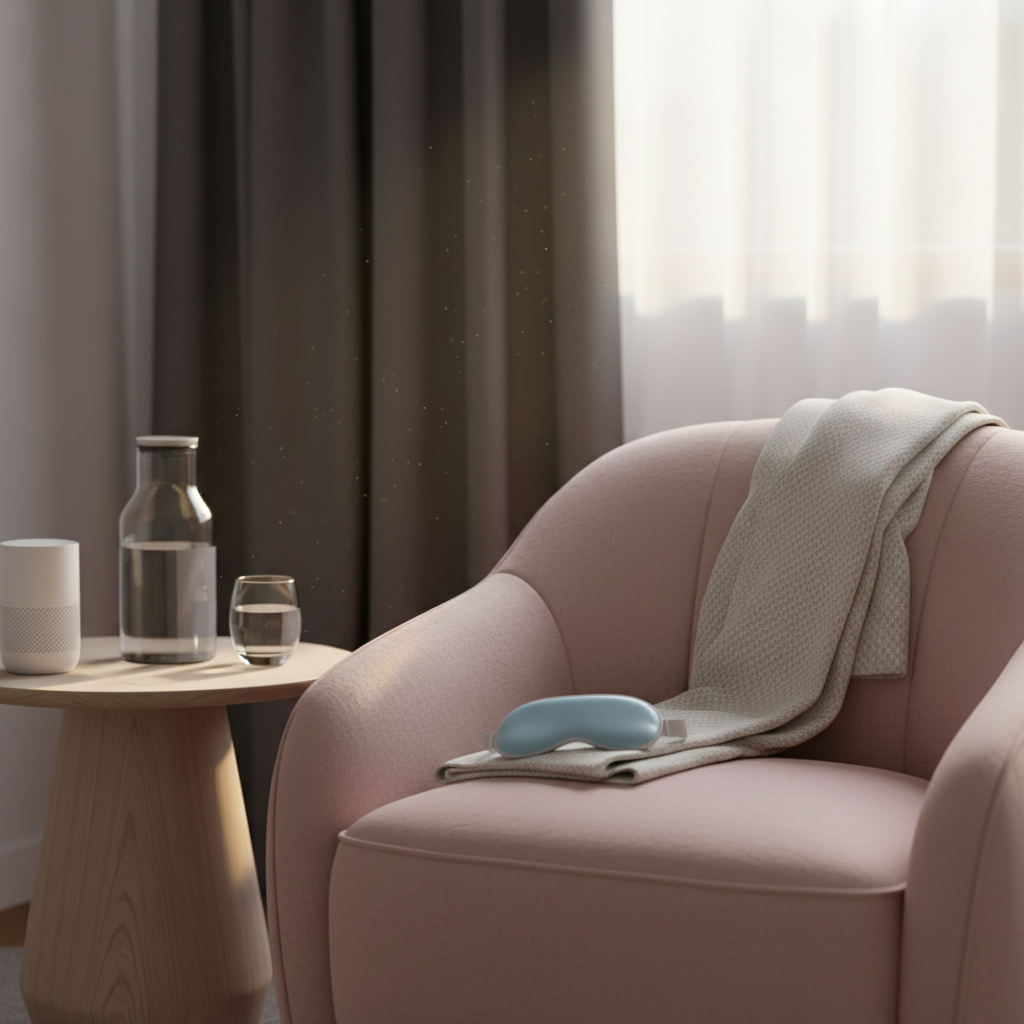
How to Sleep Comfortably in the Second Trimester
The second trimester often brings welcome relief from early pregnancy symptoms, but introduces new sleep challenges as your body continues to change. Finding comfort at night becomes increasingly important as your growing baby bump, hormonal shifts, and changing body affect your ability to get restful sleep.
Key Highlights
Here’s what you need to know about optimizing sleep during weeks 13-27:
- Left-side sleeping improves circulation to your baby and reduces pressure on major blood vessels
- Strategic pillow placement can significantly increase comfort and support
- Creating a consistent sleep routine helps maintain better sleep quality
- Back sleeping becomes inadvisable after about 20 weeks
- Daytime habits have a direct impact on nighttime sleep quality
Understanding Changes: Why Sleep Changes Mid-Pregnancy

While many women report improved sleep during the 2nd trimester compared to the first, new challenges often emerge. Your growing belly may make finding comfortable positions difficult, and increased pressure on your bladder means more nighttime bathroom trips. According to the National Sleep Foundation, approximately 78% of pregnant women experience sleep disruptions during pregnancy, with many changes beginning in earnest during the second trimester.
Hormonal shifts continue throughout this period, affecting your sleep cycle and potentially causing vivid dreams or nighttime awakenings. The hormone relaxin, which loosens your joints and ligaments to prepare for childbirth, can also contribute to physical discomfort when lying down for extended periods. Understanding these normal changes can help you adapt your sleep environment and habits to maximize rest during this crucial development period.
Understanding Changes: The Side-Sleeping Solution
As your pregnancy progresses through the 2nd trimester, sleeping on your left side becomes particularly beneficial. This position enhances blood circulation to your heart, uterus, and kidneys, which improves oxygen and nutrient delivery to your baby. The American College of Obstetricians and Gynecologists recommends left side sleeping specifically because it keeps pressure off the inferior vena cava, the large vein that returns blood from your lower body to your heart.
If you’ve always been a back or stomach sleeper, this transition might feel challenging at first. Try starting the night on your left side, knowing it’s normal to shift positions during sleep. Using a pregnancy pillow can help maintain this position more comfortably throughout the night. If you wake up on your back, simply roll back to your side without worrying—your body is likely alerting you to change positions before compression causes problems.
Your Body & Baby: Creating Your Perfect Sleep Nest

Strategic pillow placement can transform your sleep experience during the pregnancy headaches second trimester phase and beyond. The growing weight of your abdomen creates new pressure points that can cause discomfort or even pain when lying down. Creating a supportive “nest” with pillows can alleviate these pressure points and promote better alignment of your spine and hips.
Place a pillow between your knees to keep your hips aligned and reduce strain on your lower back and pelvis. Another pillow supporting your growing belly prevents pulling on abdominal muscles and ligaments. Some women find additional comfort with a pillow behind their back to prevent rolling, and possibly another under the head and neck for proper spinal alignment. Specialty pregnancy pillows come in various shapes—C-shaped, U-shaped, or wedge designs—each offering different benefits. While these can be an investment, many women find them worthwhile for the improved sleep quality they provide during the middle months of pregnancy and beyond.
Your Body & Baby: Understanding the Back-Sleeping Dilemma
As your pregnancy advances through the 2nd month pregnancy and beyond, sleeping on your back becomes increasingly problematic. When lying flat on your back, the weight of your uterus can compress the inferior vena cava, reducing blood flow back to your heart and potentially decreasing circulation to your baby. This pressure can also contribute to backaches, hemorrhoids, digestive problems, and even low blood pressure.
By around 20 weeks, most healthcare providers recommend avoiding back sleeping entirely. If you wake up on your back, don’t panic—your body typically alerts you before compression becomes problematic. Simply roll to your side and consider using pillow barriers to help maintain a side-sleeping position. Some women find that elevating the upper body slightly with pillows can reduce the negative effects if they temporarily end up on their back. Research suggests that these positional changes are most important during extended sleep periods rather than short naps or brief rest periods.
Healthy Living Tips: Creating Your Sleep Sanctuary

Your sleep environment plays a crucial role in how well you rest during pregnancy. Temperature regulation becomes increasingly important as proper hydration and hormonal changes can make you feel warmer than usual. Keep your bedroom cool—between 65-68°F (18-20°C) is ideal for most pregnant women. Consider using breathable, natural fiber bedding and sleepwear to help manage night sweats.
Light and noise management also become more important during pregnancy when sleep is naturally lighter. Use blackout curtains to create a dark environment that promotes melatonin production. White noise machines can mask disruptive sounds and create a consistent sound environment that helps you stay asleep through minor disturbances. Some women find that aromatherapy with pregnancy-safe scents like lavender can also enhance their sleep sanctuary, though always check with your healthcare provider before using essential oils during pregnancy.
Healthy Living Tips: Daytime Habits for Better Night Sleep
What you do during the day significantly impacts your sleep quality at night. Regular physical activity—approved by your healthcare provider—can help you fall asleep faster and enjoy deeper sleep. The American College of Obstetricians and Gynecologists recommends at least 30 minutes of moderate exercise most days for pregnant women, but timing matters—try to complete workouts at least 3-4 hours before bedtime.
Be mindful of your caffeine and fluid intake as well. Limit caffeine to 200mg daily (roughly one 12-ounce cup of coffee), and consume it early in the day. While staying hydrated is essential during pregnancy, try to front-load your fluid intake, tapering off in the evening to reduce nighttime bathroom trips. Many pregnant women find that pregnancy tracking apps can help monitor these lifestyle factors and their effects on sleep quality. Finally, establish a relaxing pre-sleep routine—whether it’s gentle stretching, reading, or taking a warm shower—to signal to your body that it’s time to wind down. These consistent cues help prepare both mind and body for rest, which becomes increasingly valuable as relationships and responsibilities change during pregnancy.
Embracing Better Sleep for You and Baby
Sleep isn’t just a luxury during pregnancy—it’s an essential component of maternal and fetal health. Quality rest supports your immune system, helps regulate hormones, and gives your body the energy it needs to build and nourish your growing baby. By implementing these side-sleeping strategies, creating a supportive environment, and maintaining sleep-friendly habits, you’re making an important investment in both your well-being and your baby’s development during this transformative second trimester.
